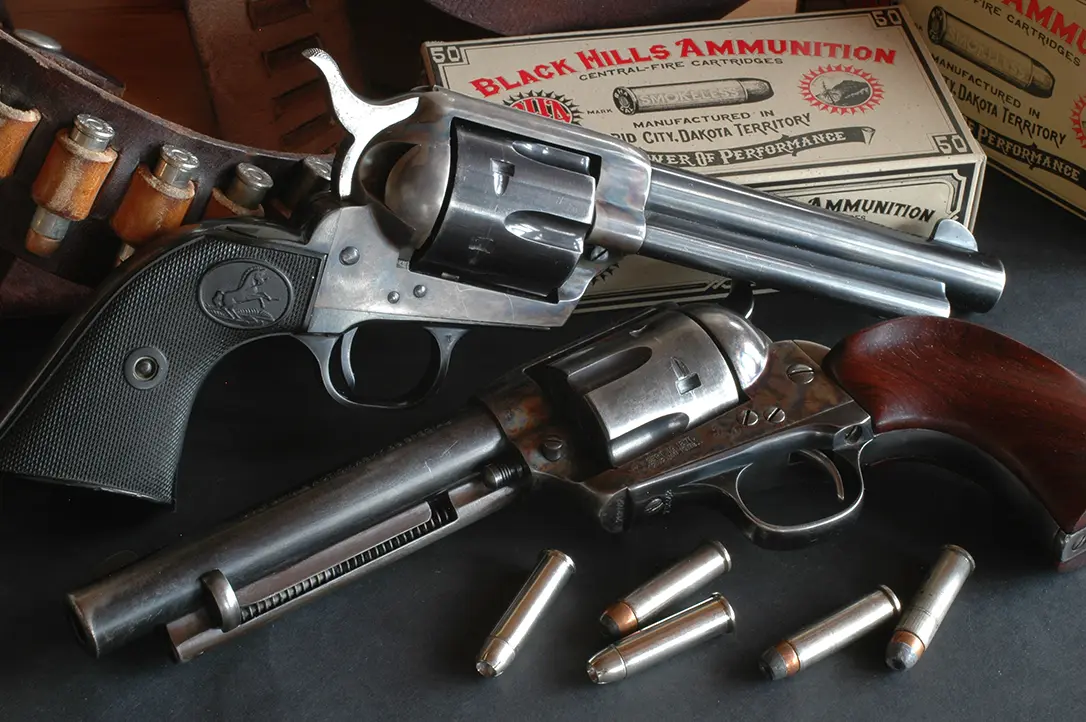Minnesota lay many saddle hours away, so Frank and Jesse James, with the Younger boys and three others, traveled from Missouri by rail. They bought horses for the final leg – fine animals, new to Northfield on September 7, 1876. The men’s dusters may also have caught the eye of hardware owner Sam Allen. He followed a trio walking toward the bank. Then one shoved a revolver into his ribs. Allen dashed off. “Get your guns, boys! They’re robbing the bank!” Suddenly: hoof-beats and gunfire! Firing on the gallop, the other five strangers thundered through the street, their bullets clearing it.
In the bank, cashier J.L. Heywood refused to open the vault. The frustrated robbers shot him dead and left. Outside, townspeople laid down withering fire. A shotgun blast upended Clel Miller; a rifle finished him. Another rifle claimed Bill Chadwell. A bullet shattered Bob’s elbow, another crippled Cole Younger in the thigh. The remnants of the James-Younger gang left a bloody trail out of town with $26.
Northfield’s citizenry reloaded.
Advertisement — Continue Reading Below
Colt Revolvers & Frontier Justice
A year later, far to the south, Dirty Dave Rudabaugh became a wanted man. Dodge City’s Wyatt Earp took his trail into Texas, then west, informed by a consumptive gambler and sometime-dentist. Earp returned empty, learning Doc Holliday was now also on the run – ahead of a lynch mob after he’d stabbed a low-level thug. A botched train robbery in 1878 led to Rudabaugh’s capture by Sheriff Bat Masterson. Ratting on his comrades, Dave promised to go straight. He did not. Implicated in the New Mexico murder of Deputy Lino Valdez, he fled. Nabbed again at Stinking Springs, he dug his way from jail and vanished.
One day in February, 1886, Rudabaugh turned up for a card game at a cantina in Parral, Mexico. Losing didn’t suit him. Screaming he’d been cheated, he jumped up, shot two players dead and wounded a third. Indignant onlookers promptly perforated Dirty Dave with a variety of firearms.
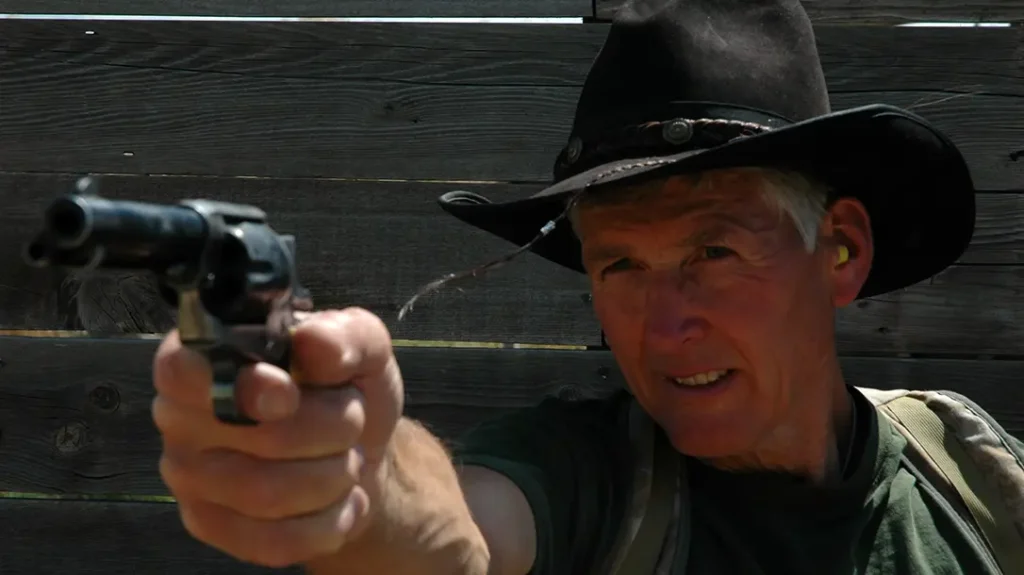
Advertisement — Continue Reading Below
Colt Single Action Revolvers
Colt single-action revolvers have armed myriad gunslingers on the page and on-screen. The 1873 archetype was one of the first single-actions to fire metallic cartridges. In .45 Long Colt a 40-grain charge of black powder drove 255-grain bullets at 850 fps, for 405 ft-lbs of punch at the muzzle. Impressed, the U.S. Army adopted the revolver in 1875. Three years later Colt chambered its 1873 Model P Peacemaker Single Action Army in .44-40, already offered in Winchester’s 1873 rifle. Using one type of ammunition for both rifle and revolver made perfect sense on the frontier! Sales of .44-40 rifles and handguns spiked!
Favored by homesteaders and drifters, by shop-keepers and lawmen and hostiles of all types, the .44-40 was later hailed as having killed more people, good and bad, than any other commercial cartridge. It soon became popular in Europe and South America too. In Colt’s Model P revolver, it was followed by two more Winchester rifle cartridges: the .38-40 and .32-20.
Colt’s Model P
Initially priced at $15, the Peacemaker with its plow-handle grip came naturally to hand and was quick to point. Reliable and quite durable, and chambered to powerful rounds, it appealed to the best and worst of men. Wyatt Earp carried one. So did the pathological Cherokee Bill (Crawford Goldsby). Cole Younger and Emmett Dalton were sweet on Colts. Robert Ford shot Jesse James with an 1873 SAA. Kid Curry (Harvey Logan), of Butch Cassidy’s Wild Bunch, turned his on himself rather than face capture in 1904. Texas desperado Ben Thompson speeded up the action of his Colt – to no avail; he was ambushed. Self-proclaimed “shootist” Clay Allison got no help from his revolver when a wagon rolled over his neck. Billy the Kid packed Colts – and, on the night of July 14, 1881, fell to Pat Garrett’s .45 Model P.
Advertisement — Continue Reading Below
For all its celebrity, the SAA shared the limited reach of every handgun. Deadly in saloons, even across streets, its bullets lost steam fast. Lawmen and crooks alike relied on rifles for more accurate fire and longer reach. Another concern: slow reloads. Emptying each chamber of a Colt individually with the ejector rod was tedious if you were ducking bullets, and difficult on a galloping horse. Smith & Wesson’s Model 3 in .44 American and .44 Russian had no greater reach than a Colt SAA in .45, but the top-break S&W (introduced in 1870) could dump all fired hulls in two seconds – 13 times as fast as a Colt!
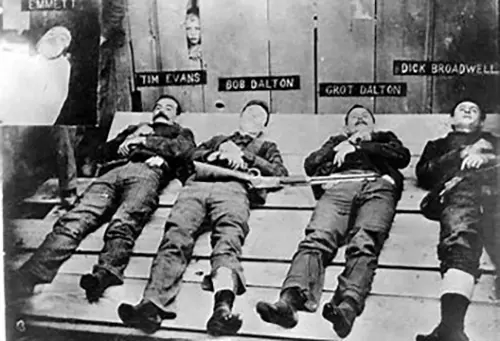
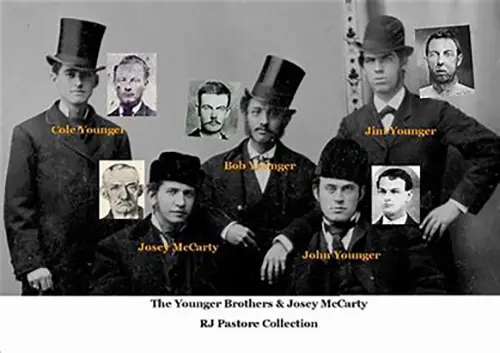
Advertisement — Continue Reading Below
Smith & Wesson Model 3
S&W Model 3 owners included Doroteo Arango, who turned to banditry in 1894 at age 16. He would become notorious as Pancho Villa. In 1910 he began a crusade against the Mexican government, declaring it impossibly corrupt. Intelligent and ambitious, Villa didn’t steal money; he took control of the banks. He didn’t rob trains; he made off with them. He laid siege to cities but gave amnesty to defectors who joined his cause. By 1914 he counted 20,000 followers, who installed him as governor of Chihuahua. But after 17 Americans died in a Chihuahua train hold-up, and Villistas raided into New Mexico, General John Pershing was dispatched to punish Pancho. The $130-million campaign failed; in 2017 U.S. troops went home. Mexican President Carranza later made peace with Pancho. But on July 20, 1923, the crafty Villa was killed from ambush by automatic fire that shredded his car.
Double-action revolvers came close on the heels of the SA. The DA Colt Lightning in .38 Long and Short Colt appeared in 1877. The 41-caliber Thunderer followed. Billy the Kid carried a Lightning, John Wesley Hardin a Thunderer. But those early DAs proved less durable and reliable than 1873 Colts, and by the time Smith & Wesson fielded more dependable revolvers, John Browning’s 1911 self-loader was on the horizon.
Despite significant strides in handgun design, citizens kept rifles close.
Advertisement — Continue Reading Below
Rifles Still Rule
One September day in 1893, Tom and Bill McCarty, with Bill’s son Fred, rode up to the Farmers and Merchants Bank in Delta, Colorado. Tom led their horses into an alley; Bill and Fred walked into the bank, revolvers drawn. A teller shouting an alarm dropped to a bullet in the head. The McCartys grabbed cash, raced into the alley and jumped on their horses. But hardware store proprietor Ray Simpson met the trio galloping around a corner. A slug from Simpson’s .40-bore Sharps smashed through Bill McCarty’s brain. Son Fred fired thrice at Simpson as the merchant reloaded on the run. The rifle’s next bullet struck the base of his skull. Tom McCarty put spurs to his horse.
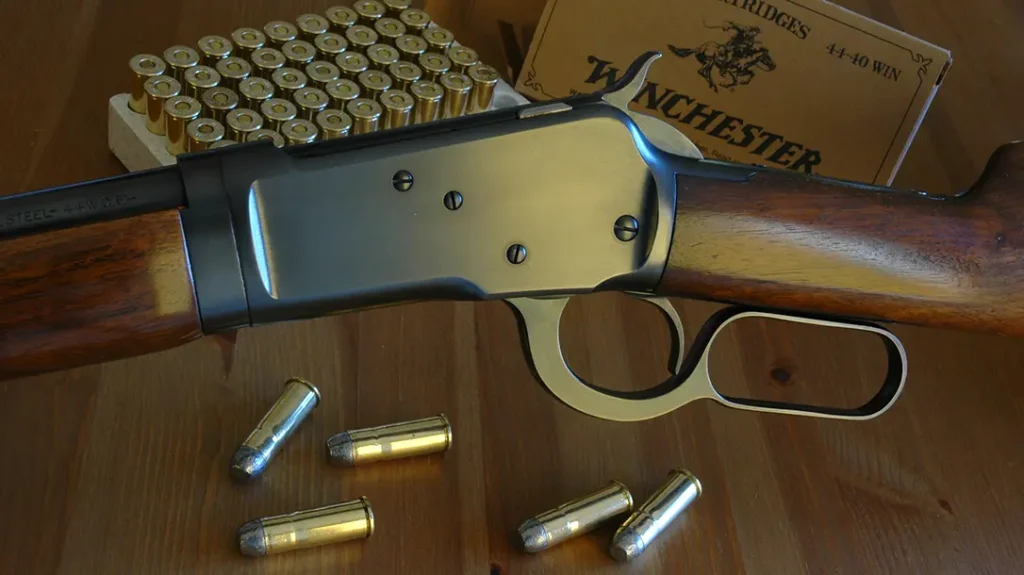
Rifles settled grazing disputes too. Tom Horn worked for cattlemen who listed him as a cowboy but paid him to eliminate nesters on range cowmen viewed as theirs. Reportedly earning $600 for each settler killed, he propped his victims’ heads on stones as both a warning and proof of work done. Horn’s disputed shooting of 14-year-old Willie Nickell finally brought the law down hard. In August, 1903, Tom was hanged.
Advertisement — Continue Reading Below
The Dalton Gang
Three of the five men riding into the southeast Kansas town October 5, 1892 were Daltons. The others: Bill Powers and Dick Broadwell. Though Deputy U.S. Marshal Heck Thomas was on their trail for train robbery and murder, the horsemen figured they had time for a bank withdrawal. Targeting both Coffeyville’s banks could double the take! But that ambitious plan depended on surprise, and the Daltons had once lived nearby…. Perhaps a citizen took a second glance as the men tied their horses in an alley beside Isham’s Hardware. In two groups, they walked toward First National and Condon Banks.
In First National, Bob and Emmett Dalton stuffed a sack with cash, then pushed their hostages at gun-point into the plaza. But Grat Dalton and company were stalled. “It’s on a time lock,” insisted cashier Charley Ball. Actually, the Condon vault door was not secured; Grat just didn’t pull it! Suddenly, thunder from the street! The fusillade riddled bank windows. The robbers fled – into a storm of lead from Isham’s. All three were hit before reaching the alley. Wounded, Grat shot Marshal Charles Connelly in the back, then dropped to bullets from a stable hand. Bob Dalton downed two cobblers confronting him with rifles.
Then, struck several times, he crumpled. Bill Powers lay dead. Wheeling his horse away, young Emmett was blown from the saddle by a shotgun blast from the town barber. Dick Broadwell, badly injured, clung to his mount and escaped. The fearsome volleys had claimed four townspeople, four outlaws. Three other citizens tended bullet wounds. Emmett Dalton would survive multiple perforations to become an actor in western movies. As an advisor on the Coffeyville shoot-out, he saw it filmed on site. He died in 1937.
Advertisement — Continue Reading Below
Texas Justice
Bill Dalton, another of Adeline Dalton’s 15 children, was absent from the Coffeyville debacle. But unlike oldest brother Frank, who became a U.S. Deputy Marshal, Bill cast his lot with killers like Bill Doolin, whose own feral pack had shot it out with U.S. Deputies in Oklahoma and left three of them dead. After Dalton killed a shopkeeper, he and Doolin split.
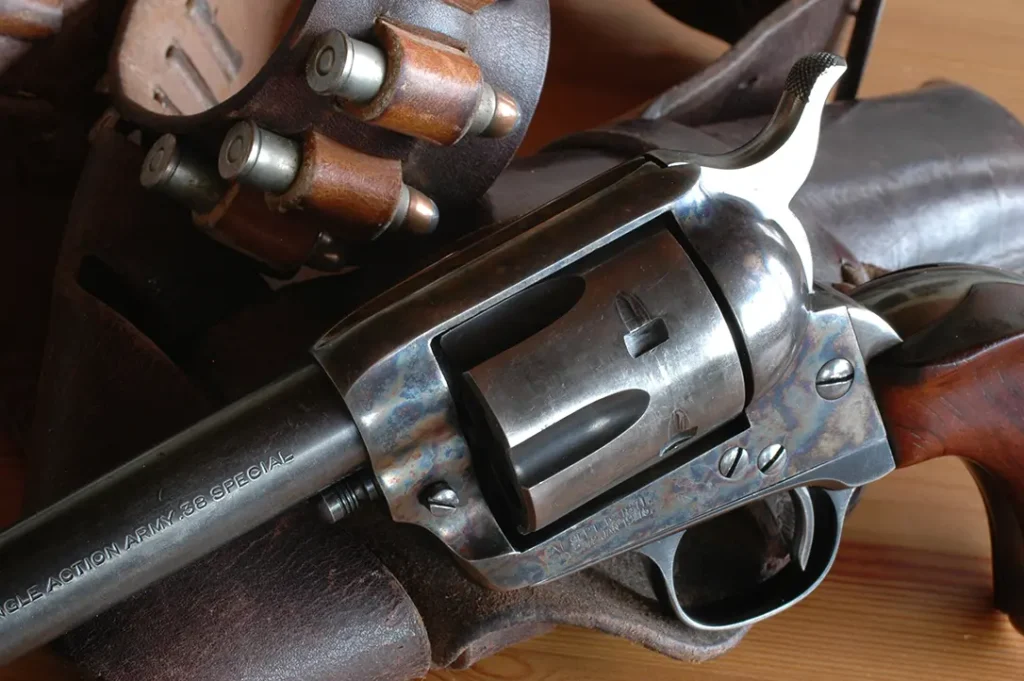
On May 23, 1894, Dalton led a trio of miscreants into Longview, Texas. Two held the horses; two entered the bank, slickers covering Winchesters. But the rifles were out when a customer entered. His shout brought townspeople, armed. Herding hostages into the street, the quartet swung onto their saddles and loosed a barrage. Jim Wallace (a.k.a. George Bennett) killed a bartender, then fired on Matt Muckleroy. Luck was with the Marshal; silver dollars in his pocket turned the bullet! From the hip, Wallace’s Winchester felled two citizens. Then, from a window, a Colt .45 toppled Wallace. His compatriots fled.
Advertisement — Continue Reading Below
In early June, after a robbery with the Knight Brothers, Bill Dalton was cornered by lawmen. He ran. Ordered to halt, he aimed his revolver. Bad mistake. The Knight brothers lasted a year on the loose. Then Asa was killed in a firefight, Jim captured. Pardoned after a life sentence, he reverted to old ways. In 1929, attempting to rob a Tulsa drugstore, he met five bullets from the proprietor, and died.
Double Trouble & Frontier Justice
As rails replaced wagon tracks and horses gave way to automobiles, outlaws adapted. Henry Starr (later, brother-in-law to infamous Belle Starr) started stealing early. On the trail in Arkansas after jumping bail, he ran into an ex-deputy named Wilson. Both men fired. Wilson missed; then his rifle jammed. Starr strode up and shot him dead. A murder conviction was overturned by the U.S. Supreme Court. On March 27, 1915, Starr and five thugs attempted what the Dalton gang had 23 years earlier: rob two banks at once.
In Stroud, Oklahoma, three men tapped each bank. First National was a pushover; cashiers at Stroud State resisted. Out of time, the outlaws joined up, behind hostages. Then 17-year-old Paul Curry, son of a local butcher, grabbed a Winchester and anchored Starr with a shot to the thigh. But Curry wasn’t finished. He ran after the high-tailing bandits. His next bullet struck Lewis Estes in the shoulder, and drove to a lung. A recovered Henry Starr found banks too tempting. On February 18, 1921, the 48-year-old crook and his gang targeted People’s National in Harrison, Arkansas. Marched to the vault, Manager William Myers snatched up a Winchester ‘73 he’d stashed there and dropped Starr with a bullet to the spine. After surgery, uremic poisoning got the best of Henry Starr.
Rifles and revolvers from 1873 long ensured that no matter the threat, when a badge was absent, citizens could get the upper hand and deliver frontier justice. Citizens who reached for rifles but carried Colts!
